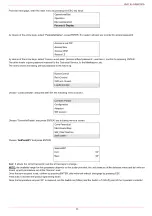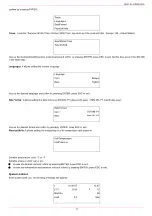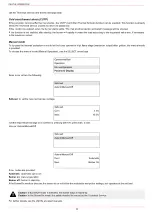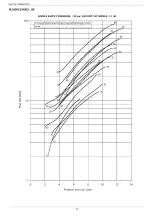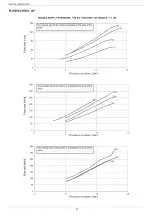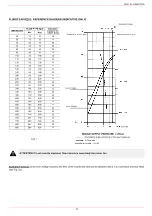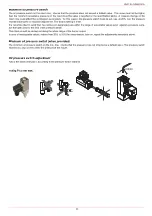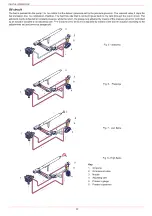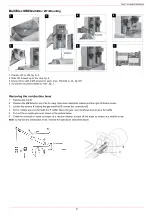
PART III: MAINTENANCE
49
At least once a year carry out the maintenance operations listed below. In the case of seasonal servicing, it is recommended to carry
out the maintenance at the end of each heating season; in the case of continuous operation the maintenance is carried out every 6
months.
OPERATION
Choose the typer of fuel by turning the
A
switch, on the burner control panel.
CAUTION:
if the fuel chosen is light oil, be sure the cutoff valves on the feed and return pipes are open.
Check the control box is not locked (signalling light
O
, on); if so, reset it by means of the pushbutton
C
.
Check the series of thermostats and pressure switches turn the burner to on.
Gas operation
Check the gas feeding pressure is sufficient (signalling lamp
G
on).
the gas proving system test begins; when the test is performed the proving system LED turns on. At the end of the test, the burner
staring cycle begins: in case of leakage in a valve, the gas proving system stops the burner and the lamp
E
turns on. Reset it, by
means of the reset pushbutton on the device, in burners with VPS504 (pushbutton
LB
in picture), or by the
D
pushbutton on the
burner panel if this one is fitted with LDU11 proving system.
Light oil operation
The fan motor starts and the pre-purge phase as well. Since the pre-purge phase must be carried out at the maximum air rate, the
control box drives the actuator opening and when the maximum opening position is reached, the pre-purge time counting starts.
At the end of the pre-purge time, the actuator is in the light oil ignition position: the ignition transformer is energised (lamp
L
on); the
light oil valves open. Few seconds after the valves opening, the transformer is de-energised and lamp
L
turns off.
The burner is now operating, meanwhile the actuator goes to the high flame position; after some seconds, the two-stage operation
begins; the burner is driven automatically to high flame or low flame, according to the plant requirements.
Operation in high or low flame is signalled by LED
N
on the burner control panel.
NOTE:
if the burner is fitted with Dungs VPS504, the pre-purgue phase starts once the gas proving system is successfully performed.
Since the pre-purgue phase must be carried out with the maximum air rate, the control box drives the actuator opening and when the
maximum opening position is achieved, the pre-purge time counting starts.
At the end of the pre-purge time, the actuator drives the complete closing (ignition with gas position) and, as this is achieved the
ignition transformer is energised (LED
L
is on); the gas valves open.
Few seconds after the valves opening, the transformer is de-energised and lamp
L
turns off.
The burner is now operating, meanwhile the actuator goes to the high flame position and, after some seconds, the two-stage ope-
ration begins; the burner is driven automatically to high flame or low flame, according to the plant requirements.
Operation in high or low flame is signalled by lamp
N
on the frontal panel.
ATTENTION:
before starting the burner up, be sure that the manual cutoff valves are open and check that the
pressure upstream the gas train complies the value quoted on paragraph “Technical specifications”. Read care-
fully the “WARNINGS” chapter in this manual.
WARNING: ALL OPERATIONS ON THE BURNER MUST BE CARRIED OUT WITH THE MAINS DISCONNECTED
AND THE FUEL MANAUL CUTOFF VALVES CLOSED!
ATTENTION: READ CAREFULLY THE “WARNINGS” CHAPTER AT THE BEGINNIG OF THIS MANUAL.
PART III: MAINTENANCE
Summary of Contents for HTLX92R
Page 57: ...Siemens LMV5x Service Manual M12920CC rev 2 1 08 2017...
Page 64: ...8...
Page 68: ...12 2 2 LMV5x program structure...
Page 95: ...39...
Page 102: ......
Page 103: ......
Page 104: ...Note Specifications and data subject to change Errors and omissions excepted...
Page 106: ...Annex1 Example for motor cable...
Page 107: ......
Page 108: ...Annex 2 Example for sensor cable...
Page 109: ......
Page 110: ......
Page 114: ......

